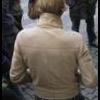RCT Discussion / Coasters
-
 18-February 05
18-February 05
-

 Beejer
Offline
What kind of features make a great roller coaster? Nothing ambient, strictly the ride itself. I realize a great coaster ride encompasses its enviroment, everything from archy, landscaping and even color, but, if you isolated the track from its enviroment what would make it a great ride? And, do you consider the ride stats to be legitimate?
Beejer
Offline
What kind of features make a great roller coaster? Nothing ambient, strictly the ride itself. I realize a great coaster ride encompasses its enviroment, everything from archy, landscaping and even color, but, if you isolated the track from its enviroment what would make it a great ride? And, do you consider the ride stats to be legitimate? -

 Scorchio
Offline
1) Stats ARE important - what's the point of the whole bloody idea of the game if stats didn't come into consideration when creating a top-notch rollercoaster?
Scorchio
Offline
1) Stats ARE important - what's the point of the whole bloody idea of the game if stats didn't come into consideration when creating a top-notch rollercoaster?
2) To me, a great coaster has a "fluid-like" layout - a smooth ride, not too disorientating, with the trains following through each inversion/element at the most enjoyable speed. An original layout helps too - none of this "first inversion has to be a loop" crap. It's SO been done to death. (Maybe that's why I enjoy making Hypercoasters)
Of course, that's MY point of view, as I'm sure this'll attract alot of comments that go against what I've said. -

 tracidEdge
Offline
Yeah, basically just a smooth layout that flows well. And also, the only time stats don't matter to me is when it looks like crap with good ones, but awesome as bad ones. But, yeah, good stats are helpful imo.
tracidEdge
Offline
Yeah, basically just a smooth layout that flows well. And also, the only time stats don't matter to me is when it looks like crap with good ones, but awesome as bad ones. But, yeah, good stats are helpful imo.
And, even though you didn't want anyone to talk about it, it has to interact well with its evironmetn and scenery. Really makes it a lot better. -

 Steve
Offline
Stats are bullshit. The only exception would be having nausea and intensity over 10, then we got problems.
Steve
Offline
Stats are bullshit. The only exception would be having nausea and intensity over 10, then we got problems.
I don't like the excitement higher than 10, either, because that's just a little weird. -

 Turtle
Offline
I second that, also, slob is one of the better coaster designers in the game at the moment, in my opinion. Also, you can't forget SA.
Turtle
Offline
I second that, also, slob is one of the better coaster designers in the game at the moment, in my opinion. Also, you can't forget SA. -

 Evil WME
Offline
mmm.
Evil WME
Offline
mmm.
Smooth and fluent are probably the most important aspects of a good coaster. I believe you can find the original Leviathan in Legends West to be the trend setter for a lot of smooth, inversion after in inversion b&m's all over the place, like Posix' Raindrop Riviera's Mercury as a prime example as what to me, is a non-outgoing, great fluent coaster. Then there are aspect such as creativity, which are very hard to describe since there's not too many ways you can go somehow without loosing the aesthetics of the coaster. I do usually find myself going for a few "alternative" routes in my coasters as they usually are able to turn coasters that for me rank 'good' to those i rank 'great.' For instance though, SACF's coaster in Kumba's park (forgot the name...) was actually charmingly different and stylish. Without knowing SACF made that coaster i was able to guess by how it came out of the brake run. I think those kind of touches make for a much more interesting coaster, which i'd say makes it infinitely better. Looping coasters are of course one thing, but i think non-looping coasters are quite another. No one likes a hyper that just seems to go up down and maybe sometimes turn a bit. Woodies are even harder to create, imo, and frankly i can't think of a whole lot that ever struck my fancy.
The most important thing about coasters though are their setting. Of course, with a horrible track layout no one will love it but i think setting definitely carries a great coaster to being even better. Scenery interaction can sometimes be great but aren't even needed, it depends on what you're going for. I do know when Caesus in God's Isle was built Magnus didn't like the start (i might have tweaked it a bit) and to be honest, it didn't look quite good either. With the land raised (*cough* [insert Kumba talk here] *couhg*)however, it made the perfect beginning i had in mind when i built it. Anyways, i'm gonna stop rambling =P. I do believe that you go through a lot of thinking 'till you know exactly what you want to see in a coaster, but once you do, with patience, you can atleast make a coaster that suits what you want to see in a coaster. -

 coasterfrk
Offline
As has been said before, a good coaster flows well. Another factor I particularly like is when the coaster interacts with itself or another ride (i.e. interlocking loops like Loch Ness Monster @ BGW, something like Deuling Dragons or Gwazi, or any headchopper effects like on most woodies).
coasterfrk
Offline
As has been said before, a good coaster flows well. Another factor I particularly like is when the coaster interacts with itself or another ride (i.e. interlocking loops like Loch Ness Monster @ BGW, something like Deuling Dragons or Gwazi, or any headchopper effects like on most woodies). -

 Butterfinger
Offline
Stats are completely irrelevant to me. I was shocked one day, in fact, to hear people bashing coasters because of high intensity ratings. I had no idea anyone even looked anymore. Were the stats on my old coasters bad? Were they being judged because of that?
Butterfinger
Offline
Stats are completely irrelevant to me. I was shocked one day, in fact, to hear people bashing coasters because of high intensity ratings. I had no idea anyone even looked anymore. Were the stats on my old coasters bad? Were they being judged because of that?
I mean, why does it matter what RCT thinks of coasters? If we were still following RCT's standards, we would all be working towards beating the scenarios. We have moved on from those primitive beginnings though, manipulating the game for what resources it has to make more aesthetically pleasing and intriguing dream parks. Most of us stopped using peeps a long time ago, because they limited what you could do with your parks. I think stats do the same thing to coasters. They stifle creativity. -

 Beejer
Offline
I understand what Butterfingers is saying, how people took RCT to another level, and I totally agree especially with paths and peeps. However, I must state that the only true consistency which held up from RCT to Corkscrew Follies to Loopy Landscapes to RCT2 to Wacky Worlds and to Time Twister is the ride's stats. Sceanery, scenarios and ride types come and go but the ride stats have always been there. I'm willing to bet that the coaster stats on the closest things to scale in this game.
Beejer
Offline
I understand what Butterfingers is saying, how people took RCT to another level, and I totally agree especially with paths and peeps. However, I must state that the only true consistency which held up from RCT to Corkscrew Follies to Loopy Landscapes to RCT2 to Wacky Worlds and to Time Twister is the ride's stats. Sceanery, scenarios and ride types come and go but the ride stats have always been there. I'm willing to bet that the coaster stats on the closest things to scale in this game. -

 Butterfinger
Offline
Their calculations on G-forces and such may be accurate, but on what mathmatical data do they base the "excitement rating"? In the real world, there is no possible way that they could conjure a foolproof equation that would relate aspects of a coaster that generate 'excitement', apply it to different coasters, and generate the same results. The ratings can't possibly be related accurately to the real world, therefore we can't rightfully deem them realistic.
Butterfinger
Offline
Their calculations on G-forces and such may be accurate, but on what mathmatical data do they base the "excitement rating"? In the real world, there is no possible way that they could conjure a foolproof equation that would relate aspects of a coaster that generate 'excitement', apply it to different coasters, and generate the same results. The ratings can't possibly be related accurately to the real world, therefore we can't rightfully deem them realistic. -

 Blitz
Offline
i think its foolish that people say they are above manipulating coaster stats when they have nowhere near enough experience at it to make a valued judgement on it.
Blitz
Offline
i think its foolish that people say they are above manipulating coaster stats when they have nowhere near enough experience at it to make a valued judgement on it.
90% of people on this site don't know how to manipulate coaster stats aside from banking all their stupid ass turns and hoping it stays under 10 intensity (you know, aside from emulating whoever they think is a good coaster designer).
All they see is all these cookie cutter B&M's and think that is the best thing ever.
The most important aspect of a coaster is pacing. THEN layout, THEN looks. You could have the best looking layout in the world... don't mean jack squat if it's crawling around random turn #7. On the other hand, you can hide imperfections in the coasters looks just with scenery and good landscaping. A solid layout is the foundation, the pacing is where all the creativity comes in. Pacing isn't just how "smooth" it glides through everything, though being in control like that is a pre-requisite. No, pacing is more about animation. It's dancing, it's a story. You create suspense, and then give a payoff, ease them down. There are beats in a well paced coaster, as if it were breathing. Slob has very solid pacing and pieces together some creative layouts using simple design elements. I'd personally have to rate SA, moore, lee, roomie, mala, etc. before slob though. -

 Beejer
Offline
I'm guessing that the EXCITEMENT is a variable in the mathematical calculations and its relation to peripherals. A 90 degree banked turn at 45 mph will always result in X amount of lateral Gs. Take that banked turn as it goes through a tunnel(for example): the ride's speed and G forces are exactly the same but, the VARIABLE (land elevation change for one) is now calculated into the equation.
Beejer
Offline
I'm guessing that the EXCITEMENT is a variable in the mathematical calculations and its relation to peripherals. A 90 degree banked turn at 45 mph will always result in X amount of lateral Gs. Take that banked turn as it goes through a tunnel(for example): the ride's speed and G forces are exactly the same but, the VARIABLE (land elevation change for one) is now calculated into the equation.
The "excitement" rating is not as crucial as the"intensity" and "nausea". And Butterfinger, I would have to agree that the "excitement" rating is really more for the game. On the other hand "nausea" and "intensity" ratings are purely derived from trigonometric functions.
-

 Butterfinger
Offline
Do the functions have any true base in real world physics though? Did the programmers know the exact G-forces a turn would generate, with a particular degree of banking, taken at a particular speed? Did they truly know that a certain series of gravitational pressure changes would wield a ride to be too intense for a guest to ride?
Butterfinger
Offline
Do the functions have any true base in real world physics though? Did the programmers know the exact G-forces a turn would generate, with a particular degree of banking, taken at a particular speed? Did they truly know that a certain series of gravitational pressure changes would wield a ride to be too intense for a guest to ride?
They may have, but realisticly, it is doubtful that they would have been able (or cared to take the time to) make the physics in RCT exact to the real world counterparts. I invision the intensity and nausea to be more of a feature for the game as well.
Of course, there is a great likelyhood that I have no clue what I am talking about (as there always is, although it is usually implied).
-

 MudBlood
Offline
baaah there's nothing bad with a good healthy coaster with 25.43 intensity.
MudBlood
Offline
baaah there's nothing bad with a good healthy coaster with 25.43 intensity.
Am I right? -

 Scorchio
Offline
Everything said is agreeable to certain terms. The fact that the game has had to be manipulated in certain ways to acheive it's best potential is fine, with hacking and stuff, but let's keep one of the few originalalities of the game, such as coaster stats. Is it that we're scared that if people take statistics, whether they be based on real world physics or not (c'mon this IS a GAME people), that our parks are not going to be up to a certain higher standard? Who says you can't build an awesome park with coasters that have excellent ratings? The first exapmly of this that I ever saw was the magnificent Mountain Beach by Mala. Have a look at "Mountain Chase" - two wonderful dueling woodies that intrect with scenery well, yet still maintain great statistics when it comes to excitement, aswell as intensity and nausea.
Scorchio
Offline
Everything said is agreeable to certain terms. The fact that the game has had to be manipulated in certain ways to acheive it's best potential is fine, with hacking and stuff, but let's keep one of the few originalalities of the game, such as coaster stats. Is it that we're scared that if people take statistics, whether they be based on real world physics or not (c'mon this IS a GAME people), that our parks are not going to be up to a certain higher standard? Who says you can't build an awesome park with coasters that have excellent ratings? The first exapmly of this that I ever saw was the magnificent Mountain Beach by Mala. Have a look at "Mountain Chase" - two wonderful dueling woodies that intrect with scenery well, yet still maintain great statistics when it comes to excitement, aswell as intensity and nausea. -

 Butterfinger
Offline
^ But why limit ourselves to >10 intensities? As of yet, no one has given me a real reason. Is it to please the non-existant guests in my park? To follow RCT's 'rules'? If so, then we have already broken just about all of them by altering settings with trainers, ect. It is just a game, as you put it. So go wild! There are no boundries in games, no physical limits to govern you. Take the things of your wildest dreams, and build them. You sure won't get a chance in the real world.
Butterfinger
Offline
^ But why limit ourselves to >10 intensities? As of yet, no one has given me a real reason. Is it to please the non-existant guests in my park? To follow RCT's 'rules'? If so, then we have already broken just about all of them by altering settings with trainers, ect. It is just a game, as you put it. So go wild! There are no boundries in games, no physical limits to govern you. Take the things of your wildest dreams, and build them. You sure won't get a chance in the real world.
Why not? If it accomplishes the other aspects defining a good coaster, I don't see how you can bring it down because of that. With an intensity of 25.43, there's no way it was meant to be a particularly realistic coaster anyway, so why judge it as one?baaah there's nothing bad with a good healthy coaster with 25.43 intensity.
Am I right?
I realise not many of you will agree with me on all of this. Perhaps if you were as disconnected with the world as I am, stuck so deep in your own little fantasy realm that you pretend to be of another species, you might understand why I am so adamant about keeping RCT seperated from the limits of society.
Don't get me wrong, I recognise the skill it takes to do what Mala and company do; build wild coasters while retaining great ratings. I have nothing but respect for that. However, it's just not my thing. -

 mantis
Offline
I like the challenge of making a great coaster within the limits of the game. It's nice making ubercoasters that are like your dreams, but you can do that any time...it's more interesting trying to do that within the constraints of the software's ideal.
mantis
Offline
I like the challenge of making a great coaster within the limits of the game. It's nice making ubercoasters that are like your dreams, but you can do that any time...it's more interesting trying to do that within the constraints of the software's ideal. -

 natelox
Offline
That's well said Mantis; I'd just like to add to that a bit. In real life, roller coaster designers and theme parks have money, landscaping, space and many other issues to contend with; and with RCT we remove all those limits. The stats limit is the only thing that keeps the game in the realm of reality. And personally, it's that fact that makes the game more fun because it conjures up a sense of "I'm a real roller coaster designer because I have these problems I have to solve." Roller coaster designers are engineers, and engineer is just a fancy word for problem solver.
natelox
Offline
That's well said Mantis; I'd just like to add to that a bit. In real life, roller coaster designers and theme parks have money, landscaping, space and many other issues to contend with; and with RCT we remove all those limits. The stats limit is the only thing that keeps the game in the realm of reality. And personally, it's that fact that makes the game more fun because it conjures up a sense of "I'm a real roller coaster designer because I have these problems I have to solve." Roller coaster designers are engineers, and engineer is just a fancy word for problem solver. -

 Blitz
Offline
Blitz
Offline
"engineer is just a fancy word for problem solver"That's well said Mantis; I'd just like to add to that a bit. In real life, roller coaster designers and theme parks have money, landscaping, space and many other issues to contend with; and with RCT we remove all those limits. The stats limit is the only thing that keeps the game in the realm of reality. And personally, it's that fact that makes the game more fun because it conjures up a sense of "I'm a real roller coaster designer because I have these problems I have to solve." Roller coaster designers are engineers, and engineer is just a fancy word for problem solver.
Brilliantly put right there, and I totally agree with your post (ha! imagine that).
I believe that "Statistics" are the one convention that most easily fits the role you describe. chauncey made a post about what it would be like to use all the conventions in the game set forth by the game creators instead of our own, which I thought was very interesting and runs along the same lines as what you said about linking the game to reality. But, stats are the one link to reality that stays CONSTANT, and is one of the more challenging things in the game to manipulate while being one of the more open-ended and freeform tools at the same time.
The Persnickety Platypus: ratings certainly aren't everything, but an understanding of the virtual mechanics behind coasters lends itself to creating better coasters. You ever play a fighting game? The people that mash might get a lucky win sometimes against a not very experienced person who hasn't learned to CONTROL his game yet. But the people who MASTER their control of the game will never ever lose to someone who mashes the buttons.
It's the same with drawing too, you could instantly jump on a "manga" bandwagon and learn how to draw by copying your favorite comic characters... but you'll have no sense of artisticness outside of drawing in that style and character. In the end, you'll progress slower than someone who learns how to draw the correct way by studying the human form and techniques for shading and perspective.
learning to control stats = learning to control your character in a fighting game/learning to draw correctly
forsaking stats and building what you think is pretty = mashing buttons/copying your favorite comic artist
that explanation felt a bit convolted, but I THINK it works.
 Tags
Tags
- No Tags